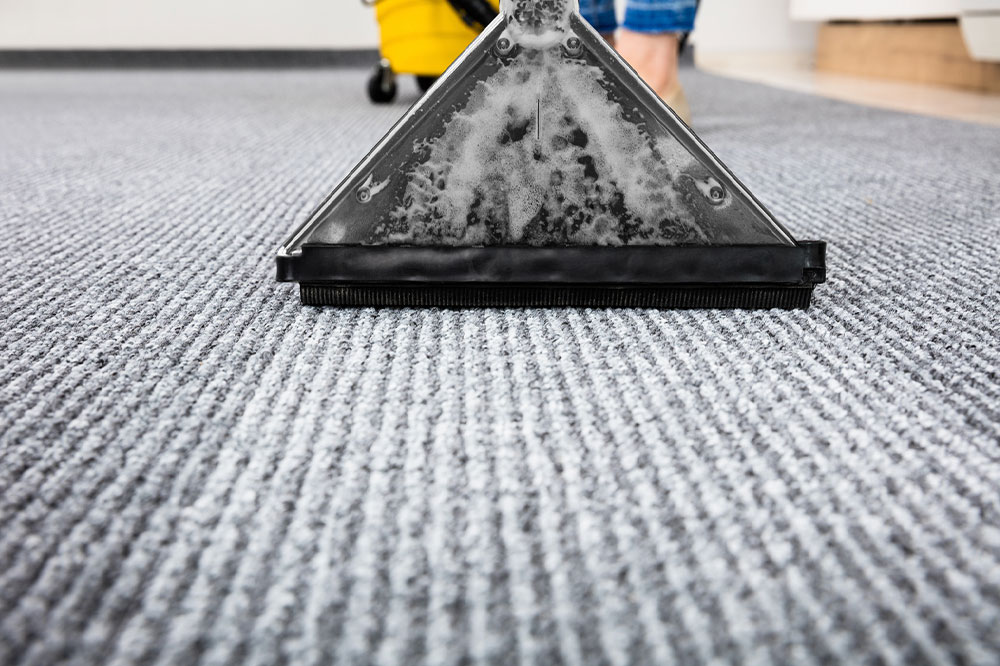Top 8 carpet cleaning hacks from experts to consider

Professional contractors and industry experts from the cleaning business know their way around perfectly cleaning carpets. While common folk may struggle with the common but challenging task of cleaning carpets, such professionals simply ease their way through the process without breaking a sweat. Such individuals know all the tips to get the process right. To help you ensure a clean indoor environment, some expert tips on carpet cleaning are listed below.
Club soda and vinegar are effective cleaners
Club soda is a surprisingly effective option to clear certain kinds of stains from carpets. However, it must be used correctly to obtain the right results. The first step of the cleaning process will require the club soda to be poured into a clean and dry cloth before blotting the stain that needs to be removed.
A mix of club soda and white vinegar can be pretty effective for stains that are hard to eliminate. This mix works best when mixed with water in a handheld spray bottle and applied to the stained area. After waiting 10 to 15 minutes for the solution to seep into the carpet, one should press a dry, clean sponge on the wet area so that the stain and the solution are soaked.
Blotting is critical to carpet cleaning
Usually, when a stain first appears on a carpet, one might feel the urge to rub or press the affected area hard to address the problem. However, both these ways are ineffective against carpet stains as they can widen the circumference of the stain. The best solution in such situations is to blot the stain first using a clean rag. One needs to gently press the stain without putting too much pressure. This technique helps the rag absorb the thing causing the stain on the carpet. Blotting is a slow process, so people must wait to get the best results.
Shaving cream can help remove stains
Many professionals claim that shaving cream is a helpful item for cleaning carpets. Shaving cream has chemical properties that make it an effective avenue for cleaning every type of stain. In that regard, it is a better cleaning agent than club soda and vinegar combined.
To clean stains from carpets, one needs to apply shaving cream on them and leave it for about half an hour. After a while, blot the cream-laden mark with a dry cloth when the cream sets in deep into the carpet. One can even spray a mix of white vinegar and water on the area before wiping it with a dry cloth.
Baking soda helps deodorize carpets
Cleaning carpets is not only about eliminating stains or keeping dust particles away. An essential aspect of cleaning is deodorizing. Foul-smelling carpets spoil the entire ambiance of rooms, houses, or workspaces. Baking soda is an effective solution to deodorize carpets as it absorbs all the foul odors from deep within all kinds of carpets. The best part about using baking soda is its all-natural, organic nature.
And the best part about all this is that one can use baking soda liberally to get the best results. So, one does not need to measure the amount of soda one applies on carpets or be mindful about spilling extra quantities by mistake. All one needs to do is sprinkle baking soda and let it stay on carpets overnight before vacuuming it off the surface the following day.
Freezing helps remove chewing gum residue
Kids tend to stick chewing gum on carpets. Due to its inherently sticky nature, chewing gum residue remains on carpets for months and even years before lightening slightly. To address this problem, one can use ice cubes from the refrigerator and apply them gently on the gum. It freezes the residue and makes it easier to remove it from the carpet slowly.
While doing this, one must gently pull the frozen residue to avoid damaging the carpet.
Hydrogen peroxide helps remove blood stains
Blood is hard to clean off carpets or other ultra-absorbent clothing materials. However, cleaning experts have an easy solution to manage this problem- hydrogen peroxide. A spray that contains about 3% hydrogen peroxide tends to foam and fizzle on the surface before eliminating the blood on the carpet. After a while, one can use a damp white cloth to wipe the area and absorb the blood stain.
Professional deep cleaning once a year is useful
Professionals advise people to give their carpet for deep cleaning once every six months. It helps keep carpets fresh and clean for longer and increases their shelf life dramatically. Deep cleaning tends to involve using a pressurized detergent solution applied to a carpet using waterjet nozzles. Deep cleaning is an effective way to remove any dirt or grime from carpets.
Heating helps remove candle wax
Like chewing gum, candle wax sticks onto carpets and spoils their appearance. One needs to heat the place strategically to remove the wax. To do this, one should place baking paper or a clean white cloth over the surface affected by the wax before putting a hot iron over these layers to heat the carpet for half a minute. It is advisable to use an iron that does not contain the steam mode. The wax slowly melts away after using this cleaning option for 10-15 minutes. Once done, one can blot the affected area on the carpet and take out the wax without causing any harm to the overall cloth surface.
Besides these techniques, there are other practical methods, like combing out crushed candies, using dish soaps to remove grease stains, and applying organic cleanser to clear out pet waste. All these cleaning techniques help ensure a healthy indoor environment and increase the lifespan of carpets.



